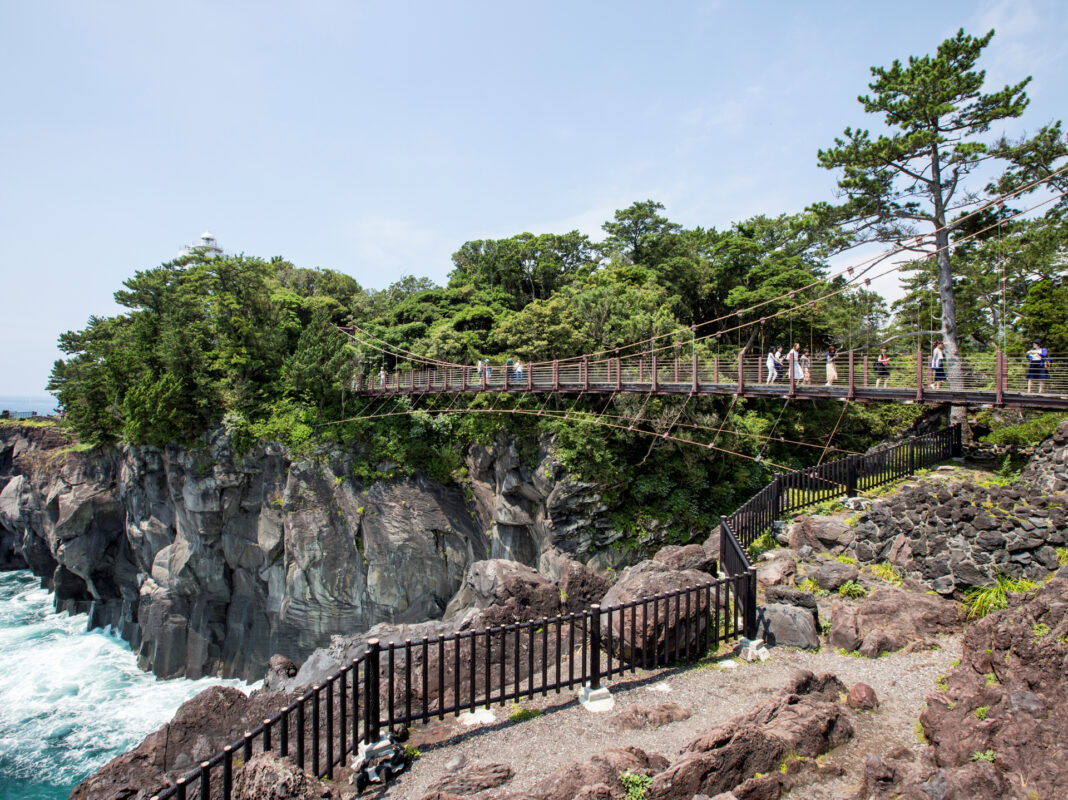Table of Contents
Awarded two stars in the Michelin Green Guide Japan!
In February 2020, the Jogasaki Coast was awarded two stars in the world-renowned Michelin Green Guide Japan (revised 6th edition) as a recommended spot for active people and families who wish to enjoy the great outdoors. Be sure to catch a glimpse of the dynamic coastal beauty created by nature with your own eyes. The Jogasaki Coast is full of geosites that represent Izu in the Izu Peninsula, which was recognized as a UNESCO Global Geopark in April 2019.
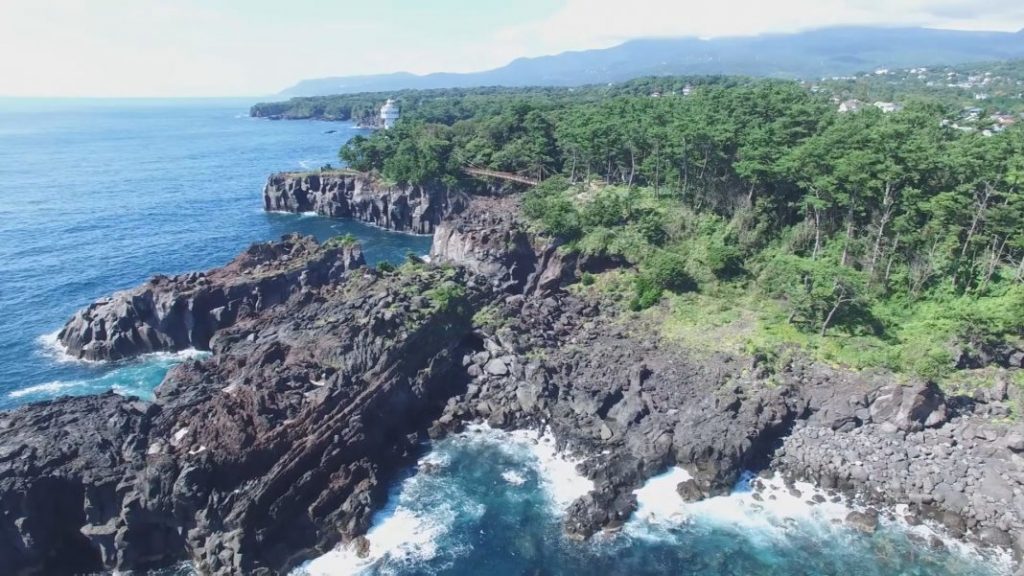
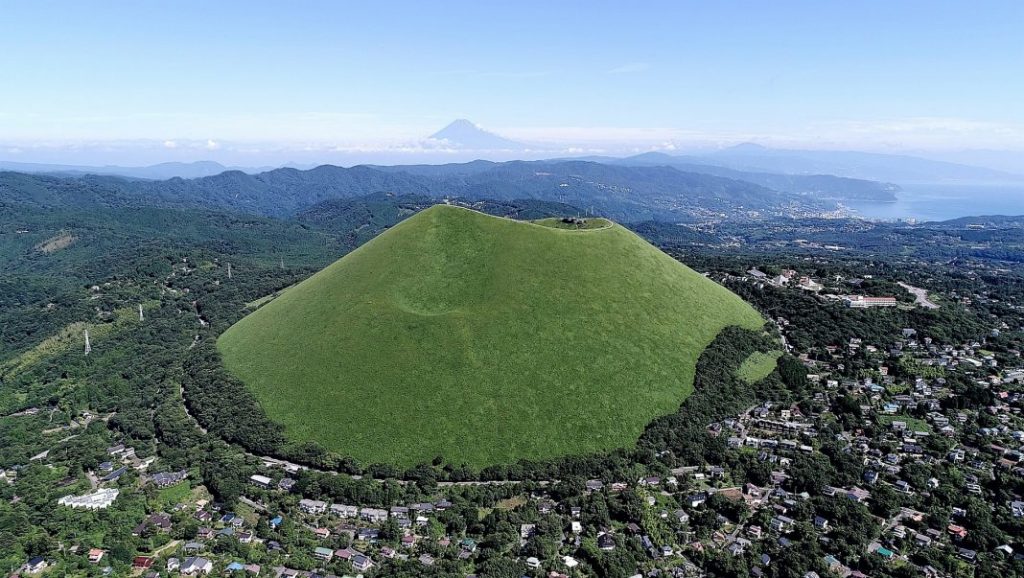
The Jogasaki Coast was formed by lava that flowed out when Mt. Omuro erupted over 4000 years ago.
We recommend taking a stroll along the 9-km-long Jogasaki Beach Picnical Course and Nature Study Course.
In particular, the Kadowakitsuri Bridge, which is 48 meters long and 23 meters high, is a thrilling and spectacular spot, and you can enjoy breathtaking scenery of the Seven Islands of Izu and the Amagi Mountain Range from the observation deck of the Kadowaki Lighthouse, which offers a 360-degree panoramic view.
Aside from the magnificent scenery, visitors can enjoy lovely flowers such as hydrangeas in June, orange daylilies and Thunberg lilies in July, and gold and silver chrysanthemum and leopard plant in the fall.
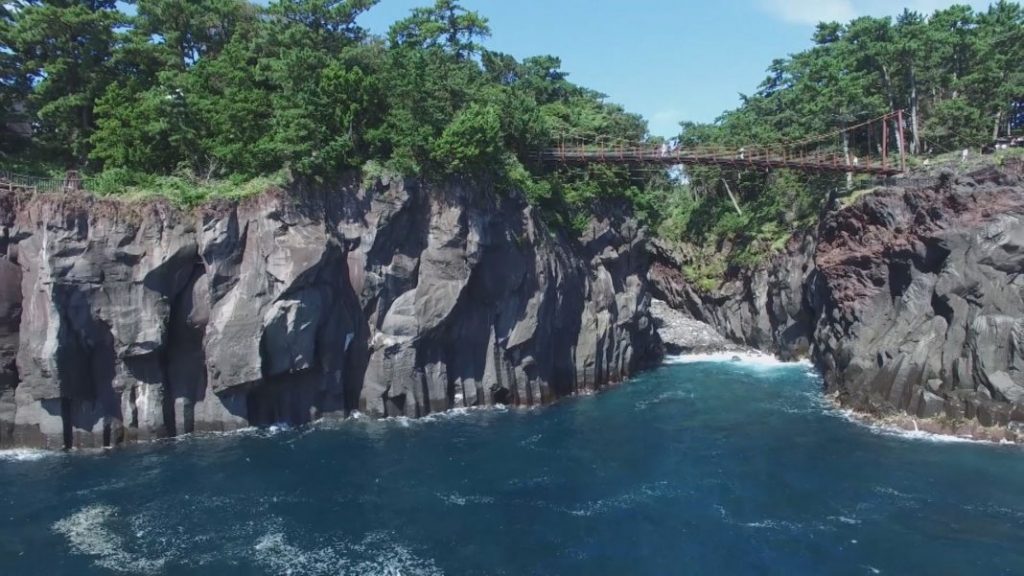
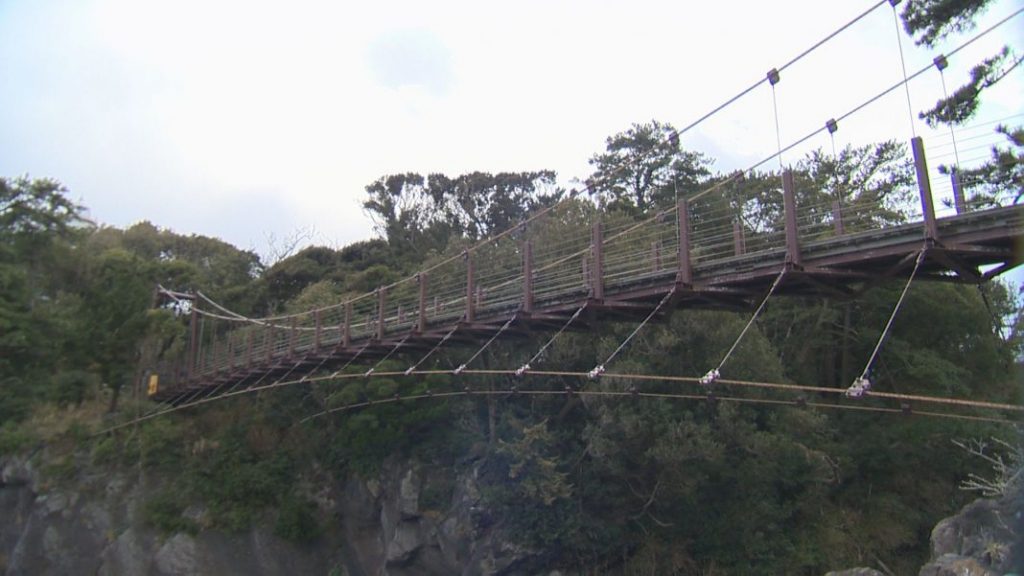
The Kadowakitsuri Bridge is a famous landmark on the Jogasaki Coast that enables visitors to experience the thrill of the precipitous cliffs that can be found below the bridge.
The Kadowakitsuri Bridge is a suspension bridge that is 48 meters long and 23 meters high, and it is a famous landmark in Jogasaki that was completed in 1968. Located in a sea cave, visitors can enjoy the thrill of the precipitous cliffs below.
It is a sturdily constructed suspension bridge with a capacity of 100 people.
It hardly shakes when you cross over it, but the height is equivalent to the seventh floor of a building, so if you’re afraid of heights, you may not want to look down….
The dynamic rocky shoreline and the waves crashing against it are very powerful and full of impact. The location is often featured in suspense dramas.
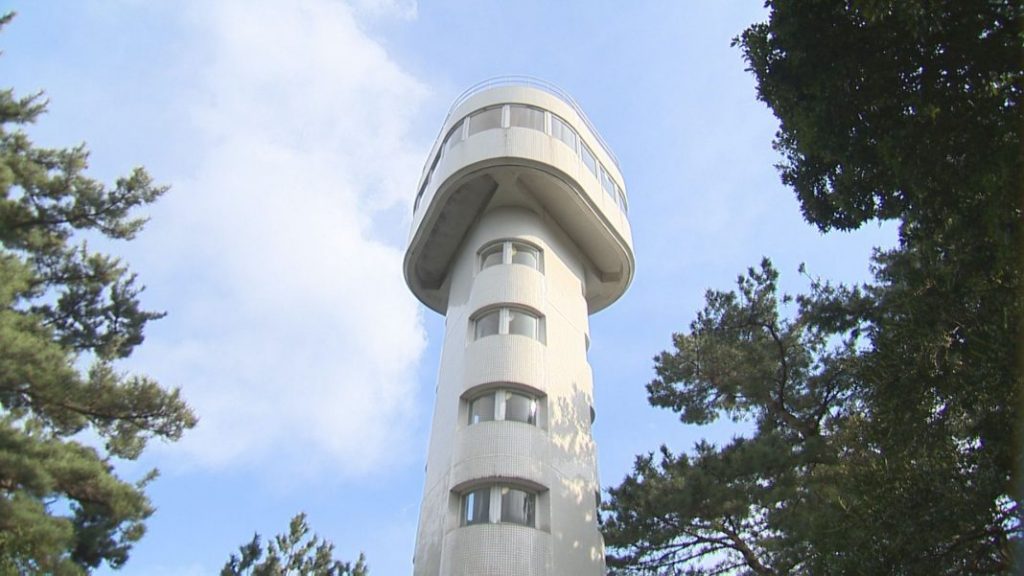
Located across the suspension bridge is the Kadowaki Lighthouse. This lighthouse was built in 1960 (rebuilt in 1995) and is 24.9 meters high, and admission is free of charge.
From the observation deck, visitors can enjoy a stunning 360-degree panoramic view of the Amagi Mountain Range, Mt. Omuro, and on clear days, the Seven Islands of Izu.
Access to the Jogasaki Coast
By train
The nearest station to the Kadowakitsuri Bridge is Jogasaki-Kaigan Station on the Izu Kyuko Line, and it is about a 30-minute walk from the station.
By bus
Buses are available from Izu-Kogen Station on the Izu Kyuko Line and Ito Station on the JR Ito Line.
From Izu-Kogen Station, take a bus bound for Kaiyo Koen and get off at Izu Oceanic Park, which is about 10 minutes away.
From Ito Station, take a bus bound for Kaiyo Koen, and get off at Jogasakikuchi Bus Stop, which is about 40 minutes away.
Jogasaki Beach Picnical Course and Jogasaki Nature Study Course
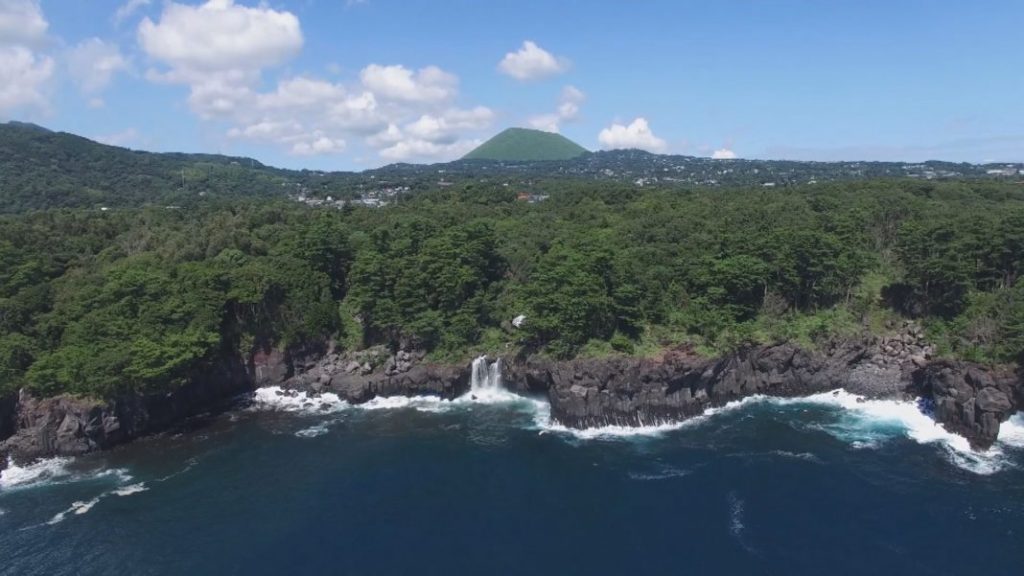
The promenade includes the three-kilometer long Jogasaki Beach Picnical Course that connects Boranaya, where visitors can enjoy seafood dishes, and the New York Lamp Museum & Flower Garden (attached to Izu Oceanic Park), and the six-kilometer long Jogasaki Nature Study Course that connects from Renchakuji Temple to Yawatano Port and Izu-Kogen Station.
Enjoy the great outdoors while taking a leisurely stroll.
Other must-see areas of the Jogasaki Coast
Igaigane
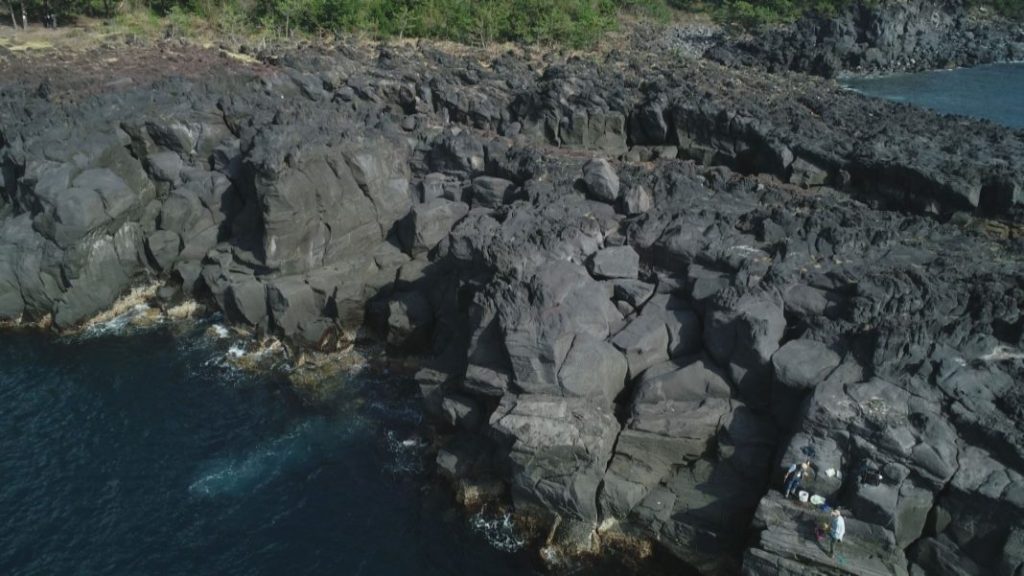
“Igaigane” is an area of the Jogasaki Coast that was formed when lava from Mt. Omuro flowed into the sea during an eruption over 4,000 years ago. As the unique name suggests, it consists of an expansive landscape of bumpy and spiky rocks, from which you can enjoy a wide view of the Jogasaki Coast. It is also a popular fishing spot and many anglers can be seen here.
Kannonhama Pothole
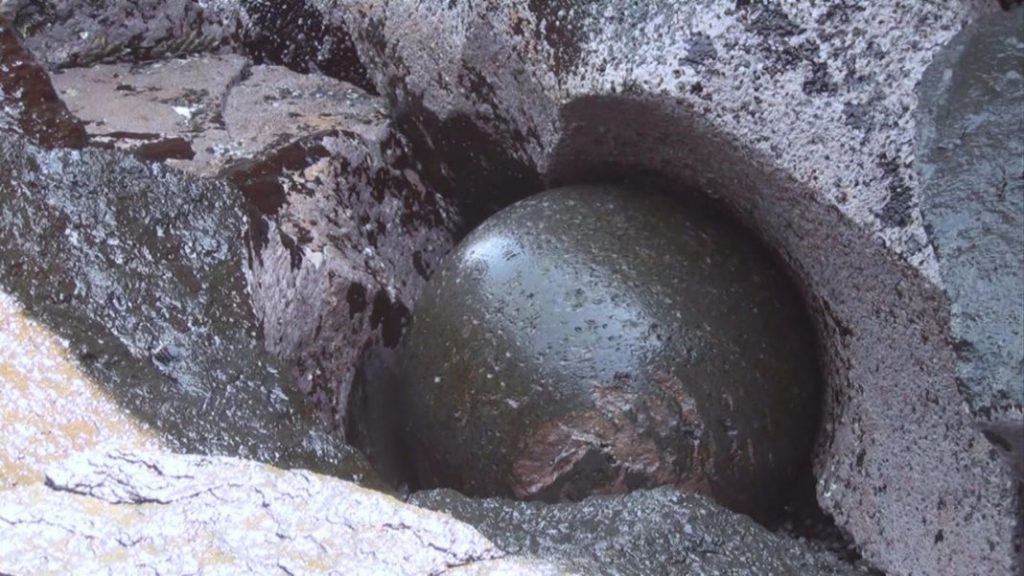
Potholes of various sizes can be found on the rocky beach of the nine-kilometer long Jogasaki Coast. Potholes, which are called “ouketsu” in Japanese, are holes created by the movement of rocks in riverbeds and other waterways. The Kannonhama Pothole is very unusual in that the rocks that created it remain almost completely spherical (approximately 70 cm in diameter) within its 1.2 meter diameter. This pothole was created by rocks in the cracks of the bedrock that were pushed and moved in and out by the incoming and outgoing waves, gradually sinking in motion to create the pothole and its spherical shape. Even today, the sphere continues to move, which means that the pothole is widening downwards and the sphere itself is slowly scraping itself.
*Because it is located near a cliff near the edge of the surf, there are no boardwalks or guide signs in place. Please visit at your own risk while accompanied by someone who knows the area well, or use the guided tours offered by the Izu Peninsula Geo Guide Association.
Summary
The Jogasaki Coast is home to many geosites in the Izu Peninsula, which has been recognized as a UNESCO Global Geopark. Please enjoy the dynamic and majestic landscapes created by Mother Nature.
It is a recommended place to visit at any time of the year.
